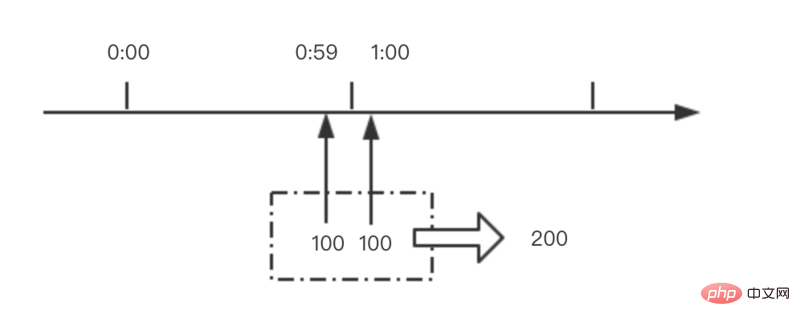With the popularity of IPv6, more and more websites need to consider the security of IPv6, and Nginx, as a high-performance web server, also needs IPv6 security settings to ensure the safe operation of the website. This article will introduce Nginx’s IPv6 security settings methods and precautions to help administrators better protect the security of the website.
- Enable IPv6 support
First of all, it is very important to enable IPv6 support in Nginx. Make sure Nginx is compiled with the correct IPv6 options. When compiling, make sure to use the --with-ipv6 option to enable IPv6 support. After compiling Nginx, you can use the following command to check whether IPv6 is working properly:
$ curl -g -6 http://[::1]/ -I
This command uses the IPv6 address to access the local host and display HTTP header information. If it works properly, you will see output similar to the following:
... Server: nginx/1.17.3 ...
- Configure IPv6 address
When using IPv6, we need to use the IPv6 address to define the listening port of Nginx and server name. Unlike IPv4, IPv6 addresses use a colon (:) as a delimiter, so you need to surround the waiter name with square brackets ([]). For example:
listen [::]:80; server_name [::]:example.com;
Additionally, you need to ensure that there are no inconsistencies or errors in the configuration files when using IPv6 addresses. You can check if there are any errors in the Nginx configuration by running the following command:
$ sudo nginx -t
- Preventing DoS attacks
Since attackers may use a large number of IPv6 addresses to attack, in Preventing DoS attacks in Nginx is crucial. To do this, you can make the following setting in the Nginx configuration:
limit_conn_zone $binary_remote_addr zone=addr:10m; limit_conn addr 20;
This setting will limit each IPv6 address to a maximum of 20 connections in 10 minutes.
- Configuring Firewall
When using IPv6, you must ensure proper firewall configuration. It is recommended to use ip6tables in the server to prevent attacks. Here are some common ip6tables rules:
-A INPUT -s 2001:db8::1 -j DROP -A INPUT -s 2001:db8:1::/64 -j ACCEPT -A INPUT -p tcp -m tcp --dport 80 -j ACCEPT -A INPUT -j DROP
The first line of rules will deny all connections from a single IPv6 address. The second line of rules allows connections from all addresses in the 2001:db8:1::/64 network. The third rule will allow HTTP connections to port 80. The last rule will block all other connections.
- Avoid DNS queries
Since IPv6 addresses are often long, DNS queries may be necessary. For faster response times and increased security, IPv6 addresses can be used instead of IPv6 names. For example:
server {
listen [2001:db8::1]:80;
server_name example.com;
}In this example, a specific IPv6 address is used instead of using a hostname to ensure minimal response time and security.
In short, the above is the IPv6 security setting method and precautions for Nginx. When using IPv6, you must consider security issues and make the necessary settings for Nginx to protect your website and server from attacks. I hope this article has inspired you and provided guidance on your security settings.
The above is the detailed content of IPv6 security settings for Nginx. For more information, please follow other related articles on the PHP Chinese website!
 内存飙升!记一次nginx拦截爬虫Mar 30, 2023 pm 04:35 PM
内存飙升!记一次nginx拦截爬虫Mar 30, 2023 pm 04:35 PM本篇文章给大家带来了关于nginx的相关知识,其中主要介绍了nginx拦截爬虫相关的,感兴趣的朋友下面一起来看一下吧,希望对大家有帮助。
 nginx限流模块源码分析May 11, 2023 pm 06:16 PM
nginx限流模块源码分析May 11, 2023 pm 06:16 PM高并发系统有三把利器:缓存、降级和限流;限流的目的是通过对并发访问/请求进行限速来保护系统,一旦达到限制速率则可以拒绝服务(定向到错误页)、排队等待(秒杀)、降级(返回兜底数据或默认数据);高并发系统常见的限流有:限制总并发数(数据库连接池)、限制瞬时并发数(如nginx的limit_conn模块,用来限制瞬时并发连接数)、限制时间窗口内的平均速率(nginx的limit_req模块,用来限制每秒的平均速率);另外还可以根据网络连接数、网络流量、cpu或内存负载等来限流。1.限流算法最简单粗暴的
 nginx+rsync+inotify怎么配置实现负载均衡May 11, 2023 pm 03:37 PM
nginx+rsync+inotify怎么配置实现负载均衡May 11, 2023 pm 03:37 PM实验环境前端nginx:ip192.168.6.242,对后端的wordpress网站做反向代理实现复杂均衡后端nginx:ip192.168.6.36,192.168.6.205都部署wordpress,并使用相同的数据库1、在后端的两个wordpress上配置rsync+inotify,两服务器都开启rsync服务,并且通过inotify分别向对方同步数据下面配置192.168.6.205这台服务器vim/etc/rsyncd.confuid=nginxgid=nginxport=873ho
 nginx php403错误怎么解决Nov 23, 2022 am 09:59 AM
nginx php403错误怎么解决Nov 23, 2022 am 09:59 AMnginx php403错误的解决办法:1、修改文件权限或开启selinux;2、修改php-fpm.conf,加入需要的文件扩展名;3、修改php.ini内容为“cgi.fix_pathinfo = 0”;4、重启php-fpm即可。
 如何解决跨域?常见解决方案浅析Apr 25, 2023 pm 07:57 PM
如何解决跨域?常见解决方案浅析Apr 25, 2023 pm 07:57 PM跨域是开发中经常会遇到的一个场景,也是面试中经常会讨论的一个问题。掌握常见的跨域解决方案及其背后的原理,不仅可以提高我们的开发效率,还能在面试中表现的更加
 nginx部署react刷新404怎么办Jan 03, 2023 pm 01:41 PM
nginx部署react刷新404怎么办Jan 03, 2023 pm 01:41 PMnginx部署react刷新404的解决办法:1、修改Nginx配置为“server {listen 80;server_name https://www.xxx.com;location / {root xxx;index index.html index.htm;...}”;2、刷新路由,按当前路径去nginx加载页面即可。
 nginx怎么禁止访问phpNov 22, 2022 am 09:52 AM
nginx怎么禁止访问phpNov 22, 2022 am 09:52 AMnginx禁止访问php的方法:1、配置nginx,禁止解析指定目录下的指定程序;2、将“location ~^/images/.*\.(php|php5|sh|pl|py)${deny all...}”语句放置在server标签内即可。
 Linux系统下如何为Nginx安装多版本PHPMay 11, 2023 pm 07:34 PM
Linux系统下如何为Nginx安装多版本PHPMay 11, 2023 pm 07:34 PMlinux版本:64位centos6.4nginx版本:nginx1.8.0php版本:php5.5.28&php5.4.44注意假如php5.5是主版本已经安装在/usr/local/php目录下,那么再安装其他版本的php再指定不同安装目录即可。安装php#wgethttp://cn2.php.net/get/php-5.4.44.tar.gz/from/this/mirror#tarzxvfphp-5.4.44.tar.gz#cdphp-5.4.44#./configure--pr


Hot AI Tools

Undresser.AI Undress
AI-powered app for creating realistic nude photos

AI Clothes Remover
Online AI tool for removing clothes from photos.

Undress AI Tool
Undress images for free

Clothoff.io
AI clothes remover

AI Hentai Generator
Generate AI Hentai for free.

Hot Article

Hot Tools

SublimeText3 Chinese version
Chinese version, very easy to use

Dreamweaver Mac version
Visual web development tools

WebStorm Mac version
Useful JavaScript development tools

Notepad++7.3.1
Easy-to-use and free code editor

SecLists
SecLists is the ultimate security tester's companion. It is a collection of various types of lists that are frequently used during security assessments, all in one place. SecLists helps make security testing more efficient and productive by conveniently providing all the lists a security tester might need. List types include usernames, passwords, URLs, fuzzing payloads, sensitive data patterns, web shells, and more. The tester can simply pull this repository onto a new test machine and he will have access to every type of list he needs.






